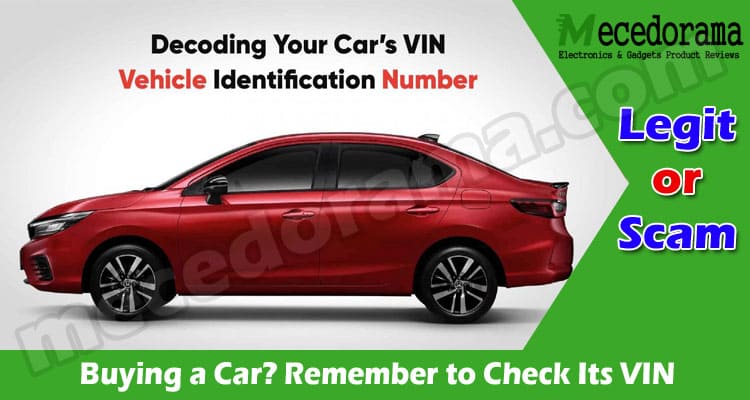Buying a Car? Remember to Check Its VIN:- Every vehicle has a unique identifier, which is similar to the Social Security number for humans. This sequence of digits and letters is known as the VIN — vehicle identification number. In the United States, this is a 17-character sequence. It can unlock a wealth of information about any car produced in the past three decades. Prevent costly mistakes by running a simple check online.
For buyers of second-hand cars, this precaution is mandatory. The FaxVIN decoder prevents unpleasant surprises. Without online checks, you may purchase stolen property or run into other serious problems. If the report contradicts the seller’s claims, they are lying. Discover how these services work and how to make the most of them.
VIN: The Basics
The US government authorized the introduction of these identifiers in 1954, but they did not follow a universal format until 1981 when the National Highway Traffic Safety Administration approved the standard we know today. Every on-road vehicle in the country has a unique code containing 17 characters, both letters and numerals. It never includes the letters O, I or Q, as these letters may be confused with 0, 1, and 9, respectively.
It is impossible for two cars to have the same VINs unless the code has been cloned. This means the vehicle you want to buy has probably been stolen. The identifier never changes, unlike a license plate. If there is something wrong with the car, you will notice some discrepancies.
Any mismatch between the VIN stamped on the car and the information in the registration documents must raise suspicion. With the help of simple online checks, prospective buyers can see if the vehicles are defective or have been written off. These services are available in all states.
How to Find Your Vehicle’s VIN Number
Although the format has been standardized, different manufacturers place the numbers on different parts of their vehicles. These are always non-removable areas, as the number must stay on the car throughout its lifetime. For the same reason, VINs are most commonly found on the interior, not the exterior, where they can be easily damaged or scratched.
Most commonly, you can find the code on the door on the driver’s side or on the dashboard. Less often, the identifiers are stamped on the engine block or beneath the spare tire. If the vehicle is a trailer, look at the hitch area.
VIN Decoding
This is a simple check that reveals the origins of the car and its specs. Each of the 17 positions refers to a specific type of information. You can see in what country and at what plant the car was manufactured. Here is the full breakdown from left to right:
- Position 1: the country of origin;
- Positions 2-3: the manufacturer;
- Positions 4-8: brand, type of engine, and other specs;
- Position 9: manufacturer confirmation code;
- Position 10: model year;
- Position 11: manufacturing plant;
- Positions 12-17: serial number.
VIN Check
This is a thorough check of the vehicle background. If you are shopping for a second-hand car, the full report will give you peace of mind and prevent you from buying stolen or damaged property. While the decoding reveals the original specs, the history report will highlight any suspicious events in the life of the vehicle. Sellers are not always truthful, but you can easily catch them in a lie. Here are the key sections of these comprehensive reports:
- history,
- type,
- odometer readings,
- any accidents,
- manufacturer recalls,
- total loss records,
- mileage rollback,
- structural damage,
- lien and repossession,
- damage from flood, fire or hail,
- theft and recovery,
- personal, police or taxi use,
- inspections,
- service records,
- registration history, etc.
Any negative events are highlighted in this end up report. If the seller denies any accidents, damage or repossessions that have actually happened, you know the deal is shady.
Owner Lookup
This is the third type of check that can be done online. Enter the VIN to see how many individuals or businesses have owned the vehicle you intend to buy. The results will show in which states it was owned. Note that names and addresses are private details protected under the Driver’s Privacy Protection Act, so you cannot see them. Nevertheless, this service can also be useful.


